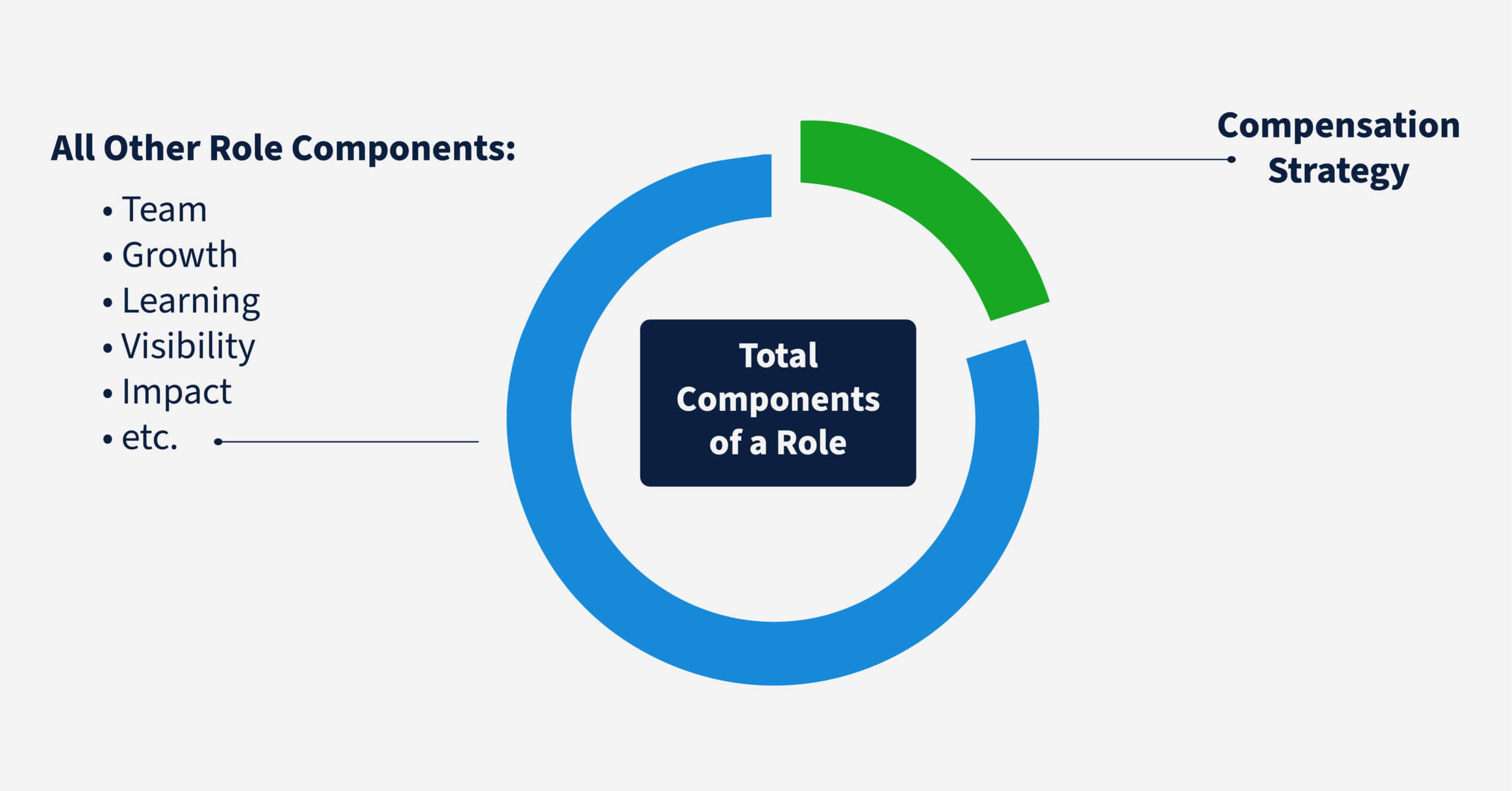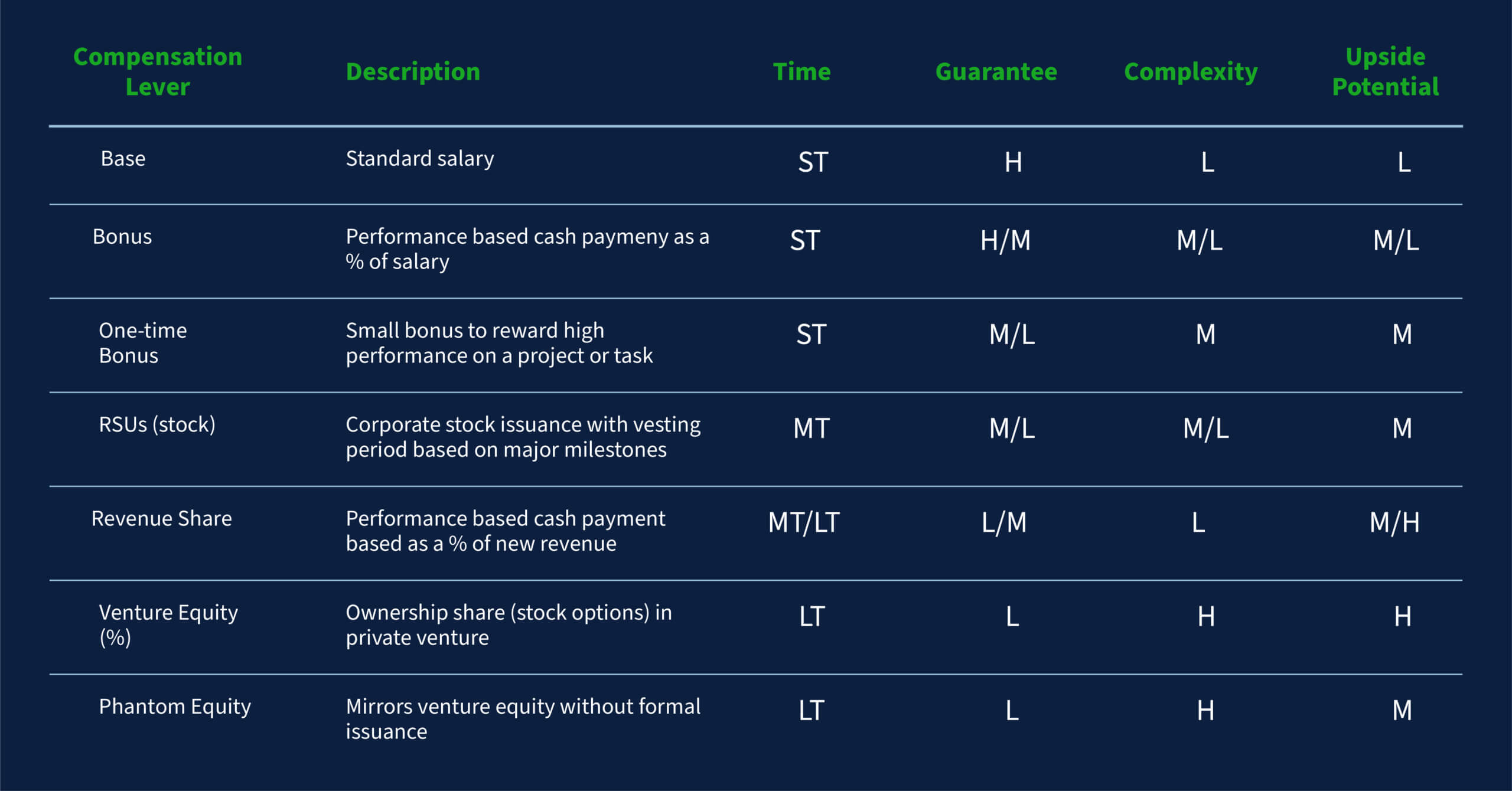
Wealthy or Worthy? Compensation schemes for new Corporate Ventures
Compensation is one of the big barriers for companies seeking to be ambidextrous organizations. Can we find Corporate Explorers willing to lead new ventures without the sorts of rewards available to entrepreneurs?
Typically, either the new venture team receives a compensation package similar to their core business counterparts or, in an attempt to simulate startups, the compensation scheme is too complex to understand. In this 3-blog series, I will explore the challenges and opportunities of compensation for new corporate venture teams.
Don’t over (or under) think it

The challenge with innovation teams is that you are looking to attract talent that has characteristics of both entrepreneurs and corporate leaders (i.e., Corporate Explorers). These are leaders with a higher-than-average risk tolerance, who see the opportunity to build ventures from within. They see the opportunity to leverage a corporation’s assets and want to contribute to the success of the company. However, they are not selfless. They want to benefit from their efforts.
According to our survey research, the top risk for these innovation leaders is to their reputation and long-term career prospects. Explorers always face skepticism – often you only know in retrospect if they are pursuing a brilliant idea or a crazy one. If the venture fails, they are left explaining a failure, even though it was a project with high uncertainty. If it succeeds, they may have done as much work as an entrepreneur but received meager rewards in comparison.
Some companies try to address this problem with shadow stock or other similar schemes. These create a ‘proxy’ for a market-based valuation. You need a way to make clear the exit and valuation guidelines so that the innovation team knows how value will be realized. Corporations are often reluctant to make these commitments, fearful of the potential size of the financial liability they are creating. This tends to make the rules governing payouts complex or very hard to achieve, so reducing motivation.
Start at the end to determine where to begin
Starting at the end is an excellent way to focus on building a compensation plan in the beginning. Think about what you want to achieve and how you want to achieve it before you determine the compensation strategy best suited for your team. That can feel like a chicken or egg type of situation. Compensation can drive intended (or unintended) behaviors, but how do you use that to connect to the team’s objectives and goals?
- First, what results do you want to achieve (see ambition from Corporate Explorer)?
- To achieve those results, what structure(s) of an innovation or venture team will you take?
- To build that structure to achieve those results, what types of behaviors do you want to see from your team?
- To drive the behaviors to build the structure to achieve those results, which compensation levers can bring out those behaviors?
For example, if you want to create the next $1 billion business unit (results), you may want to have a venture building lab creating emerging business ventures (two structures), with a growth mindset, ability to fail, and risk-taking mentality (behaviors) you may want to consider adding a revenue sharing or long-term RSU component to keep focus on the growth goals. If you want to monetize your innovation externally by engaging entrepreneurs-in-residence to create new ventures, then you may want some sort of stock-based-plan.
Which compensation levers should I use?
There are many compensation levers that exist. The most common are shown below and each provide a different value. The important factors are to connect the right levers that derive the intended behaviors and results. Don’t worry we’ll explore and explain this further in the next part of this series.

Conclusion
While compensation has significant importance in a role, it is only one component of a role for the person seeking the job. To have the correct weight of focus for compensation, teams must remember to use compensation as a tool connected to the team’s objectives. The challenge here is the behavior changes may not be the behaviors you intend. There are many unintended consequences that can arise if the compensation strategy is not clearly connected to the objectives and vision of the team. For example, if a venture team is incentivized to drive the market value of the asset they create, this will drive them to a strategy for spinning out the new business. That’s a problem if your goal is to create new revenue sources or capabilities for the existing business.
Next up…Part 2 – Understanding Compensation Levers and Pitfalls
For Part 1 of this 3 Part series, we wanted to introduce the importance of compensation, discuss the best approach to compensation, and provide insight on how to connect it to the objectives of the team. Part 2 of this series will dive deeper into the different compensation levers, when and how to apply them, and the pitfalls to avoid such as unintended consequences of different compensation strategies.
